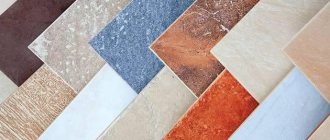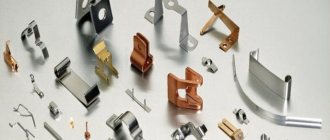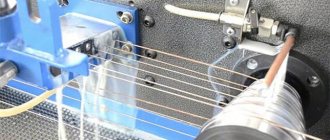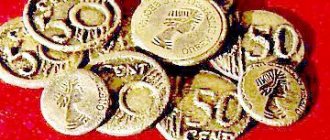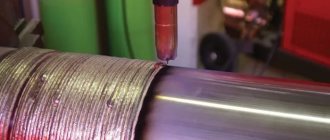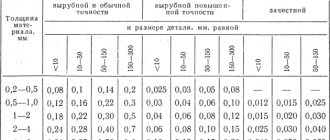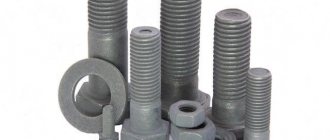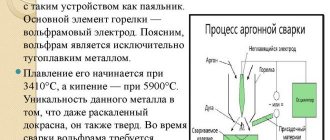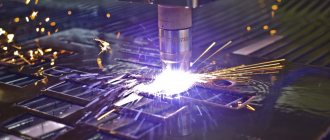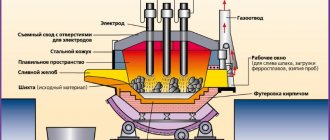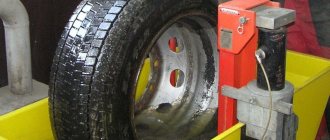1. Binder (cement);
2.Filler
(sand, crushed stone, expanded clay, slag, etc.). Depending on the properties of the aggregate used, finished concrete products differ in their physical and mechanical properties (strength, thermal conductivity, etc.);
3.Water
. Due to the low water content in the mixture, the resulting building materials have high performance qualities (frost resistance, strength). Vibrocompression technology involves filling the mold not due to the fluidity of the mixture, as in conventional liquid concrete, but due to vibration and pressure on the semi-dry mixture;
4.If necessary - dyes, plasticizers, hardening accelerators;
The production of products using the vibration pressing method is almost or completely automated, which makes it possible to set up production on an industrial scale.
What can be produced using semi-dry vibrocompression technology?
Vibrocompression is a popular method for the production of small-piece building materials, as it allows the production of a wide range of concrete products. This list includes:
Wall and partition stones (cinder blocks, expanded clay blocks, wood concrete blocks, etc.)
Facade brick
Paving slabs/paving stones
Road and garden borders, curbs
Gutters
Foundation blocks and permanent formwork blocks
Elements of landscape architecture
To produce a fundamentally new type of product, it is enough to change the forming equipment on the concrete block press. Manufacturers of vibration-pressing equipment, if necessary, can create a mold according to your drawings.
Equipment necessary for the production of vibrocompressed products
The quality of manufactured products depends on compliance with production technology and the equipment used. Equipment for semi-dry vibrocompression includes:
· A vibropress is a pressing unit that can produce a wide range of small-piece building materials, thanks to the use of shock or harmonic vibration. Vibropresses can be mobile, stationary or manual.
Manual machines have low productivity and are intended for individual use. Mobile units form a concrete product directly onto a prepared working site, indoors or outdoors, moving step by step along it. Such a machine is often called a “walking” or “laying hen”. A stationary brick making machine is installed on a foundation platform and operated in one place. Its advantage is that it can work as part of an entire molding complex, including concrete mixers, batchers, conveyors, etc.
· Concrete mixer. To prepare semi-dry concrete mixtures, forced-type concrete mixers (horizontal blade, planetary) are used. Their peculiarity is that the concrete mixture is mixed not by rotating the drum, as in gravity concrete mixers, but by rotating a shaft with blades inside a stationary container.
· Form-forming equipment. To produce vibrocompressed building materials, form-building equipment is required: punches and dies. A matrix is a metal mold that determines the parameters of the future finished product. Punch - performs the function of a press and has a shape inverse to the shape of the matrix, precisely entering it during the molding process.
· Technological pallets - replaceable equipment for equipping vibrating presses when molding concrete products, as well as moving them to the drying zone.
· A belt conveyor or skip hoist is designed to transport concrete mixture from a concrete mixer to the hopper of a vibropress.
· Vibrating sieve is used for mechanical sifting of bulk materials to obtain the required fraction. Its use helps improve the quality of finished vibrocompressed products.
· The crusher allows you to obtain a smaller fraction from a larger filler fraction. The coarse fraction is cheaper, so using a crusher allows you to save money on the purchase of expanded clay, crushed stone, etc.
Vibropressing
The most popular technology for producing paving stones is the vibrocompression method. This technology is characterized by high productivity and relatively low human labor costs, but it requires practical skills of the worker and operator responsible for preparing the finished concrete mixture.
The specificity of the recipe for preparing the concrete mixture is the absence of solid fillers with a fraction larger than 5 mm. The principle of the technology is to compact semi-dry concrete mixture under pressure with simultaneous vibration.
Composition and proportions of the vibro-pressed mixture
The loading concrete mixture for a vibropress must be homogeneous, but rigid. This prevents finished products from delamination. For a vibro-pressed mixture, coarse aggregate is contraindicated, since its uniform distribution requires a large amount of liquid mortar. Therefore, a solution for vibrocompression containing cement, sand (screenings), water, dyes and plasticizers is called a fine-grained concrete mixture.
The specifics of the technological process do not make it possible to produce vibration-pressed tiles at home. Production requires appropriate equipment, since it is extremely difficult to organize the supply, preparation and unloading of vibro-pressed products. To prepare the mixture, use: cement (1:3), fine aggregate (1:4) and water (30% by weight of cement), if necessary, add dyes (3% by weight of cement).
Stages of production of vibrocompressed products
The vibration pressing process is divided into several stages:
1. Mixing the concrete mixture in a concrete mixer.
2. Molding of products. A technological pallet is placed on the vibrating table of the vibrating press, on which the matrix is installed. The form is filled with the prepared mixture. The punch, lowering, presses on the mixture and, with vibration turned on, molding occurs. Once the process is complete, the punch and die are lifted, leaving the finished product on the pallet.
Rigid concrete mixtures do not require curing in molds before stripping, since newly formed products retain their shape and can be immediately moved to the drying zone.
3.Drying of the finished product occurs either in special steaming chambers - up to 8 hours, or in natural conditions at a temperature of at least 10°C - up to 24 hours.
Vibropressing technology, thanks to a high degree of mechanization and automation, allows the production of large volumes of concrete products with minimal use of manual labor.
Vibrocasting
The vibration casting method differs from vibrocompression by the ability to produce concrete products of various shapes, configurations and patterns on the surface of the tiles. However, the production of vibrocast concrete products requires significant labor intensity and is not characterized by high productivity. The prepared mobile concrete mixture is fed into pre-prepared forms and, through vibration, fills the entire space almost perfectly, which allows you to obtain neat, beautiful finished concrete tiles.
Compound
A feature of the concrete mixture for the production of vibrocast tiles is the use of a large amount of aggregate. The technology for preparing the mixture allows the use of coarse crushed stone from 3 to 20 mm, as well as special plasticizers and stabilizers to impart mobility. The use of hard rock crushed stone fillers allows you to save on cement, since a stone frame can create a strong structure for future tiles.
The concrete mixture for the production of vibrocast tiles is close in composition to classic heavy concrete. The technology of vibration casting is simple and, with special molds, a vibrating table and a gravity mixer, allows you to organize production even at home.
Component proportions
The production of vibro-cast concrete products at home makes it possible to maneuver with the quantity of the main components of the concrete mixture. For example, manufacturers, in order to simplify the technological process, can reduce the intensity of vibration by increasing the mobility of the mixture. However, the composition of the mixture in this case should also be adjusted.
To prepare a concrete mixture for vibratory casting, you can use a simple scheme of proportions of the main components:
- Cement – 1 part;
- Sand - 1.5-1.7 parts;
- Crushed stone – 2.5-3 parts;
- Water - 0.35-0.4 parts;
- Plasticizer and pigment.
Manufacturers always have the opportunity to increase the strength class of the concrete mixture, but this entails a change in composition and an increase in cement consumption. The main quality characteristics are preserved along with the entire set of basic properties of vibrocast tiles.
Advantages of vibrocompressed products
Vibrocompression allows us to obtain high-quality building materials with high strength and durability. The main advantages of vibrocompressed products include:
Accuracy of geometric shapes and sizes,
High resistance to constant loads, mechanical and chemical influences
·Low water absorption, due to which vibration-pressed products can be used in any climatic zone.
·Compliance of the produced materials with the requirements of the state standard (GOST 6133-99 “Concrete wall stones. Technical conditions”).
· Products made using coloring pigments do not lose color saturation throughout their entire service life.
· Vibropressed blocks lend themselves well to plastering and other types of finishing work; at the same time, they themselves can be a facade material (colored brick, crushed brick).
Advantages of the method of vibrocompression of products
Provided that the mixture recipe and all important steps are followed, the technology for producing paving slabs by vibrocompression is more preferable and makes it possible to obtain tiles that are resistant to frost, high temperature, water, and wear, which comply with GOST 17608-91.
The main advantages of vibrocompression:
- Very high tile strength (M200-M400) with less cement consumption
- Obtaining tiles that are resistant to frost - the indicator is within the limits of MP3 200-300 cycles
- Significant savings on modifying additives and plasticizers
- Opportunity to save on employee wages (the process is automated at many stages)
- The ability to organize large-scale production, reducing overall costs due to two-shift work and a shorter production cycle
- The ability to retrofit a brick making machine with various devices and accessories in order to produce different tiles and increase productivity
- Receiving products with strictly designated geometric shapes, colors, and sizes
- The rough surface of the tile makes it possible to lay it in urban areas, terminals, warehouses, deceleration and acceleration lanes, etc.
- Possibility of surface treatment of vibropressed tiles - the material can be bush hammered, polished, and grinded
Equipment and materials
Vibration pressing of paving slabs on an industrial scale requires the purchase of serious equipment. First of all, it is a vibropress, which is used to compact the mixture. A brick making machine can differ in power, degree of automation, mobility, and have different sizes of the forming platform. You will also need special forms made of polyurethane, plastic, rubber, silicone, formoplast, etc. In mass production, steel molds are used.
To organize the production process of paving slabs, you will need concrete mixers for preparing the mixture, vibrating sieves for sifting bulk materials, stackers for lifting and laying forms with tiles. If production is carried out in the cold season, you will also need to provide a heat source for quick and high-quality drying of the product.
If we are talking about the home production of tiles using the vibration pressing method, the vibration press itself, molds, a concrete mixer and a heat source will be sufficient (if the process continues in winter).
Materials for tile production:
- Cement grade M500
- Coarse filler - fine crushed stone, screenings, pebbles or slag
- Fine filler – sand fraction 0.5-0.6 millimeters
- Water
- Pigment - to give the tile the desired color
- Mold lubricant, which simplifies the work process
Delivery of vibrocompressed products
When performing loading and unloading operations, you should be guided by the labor safety requirements established by the current building codes.
When purchasing blocks from us, the client is offered vehicles for their transportation. Depending on the type of cargo, its volume and dimensions, you can use vehicles with the required carrying capacity, a manipulator with or without a trailer.
The maximum carrying capacity of the proposed vehicles (VV) is 21 tons,
vehicle body dimensions – 13.6 by 2.45 meters ,
the volume of cargo they transport is 31, 7m3 or 22 pallets with blocks. More details
